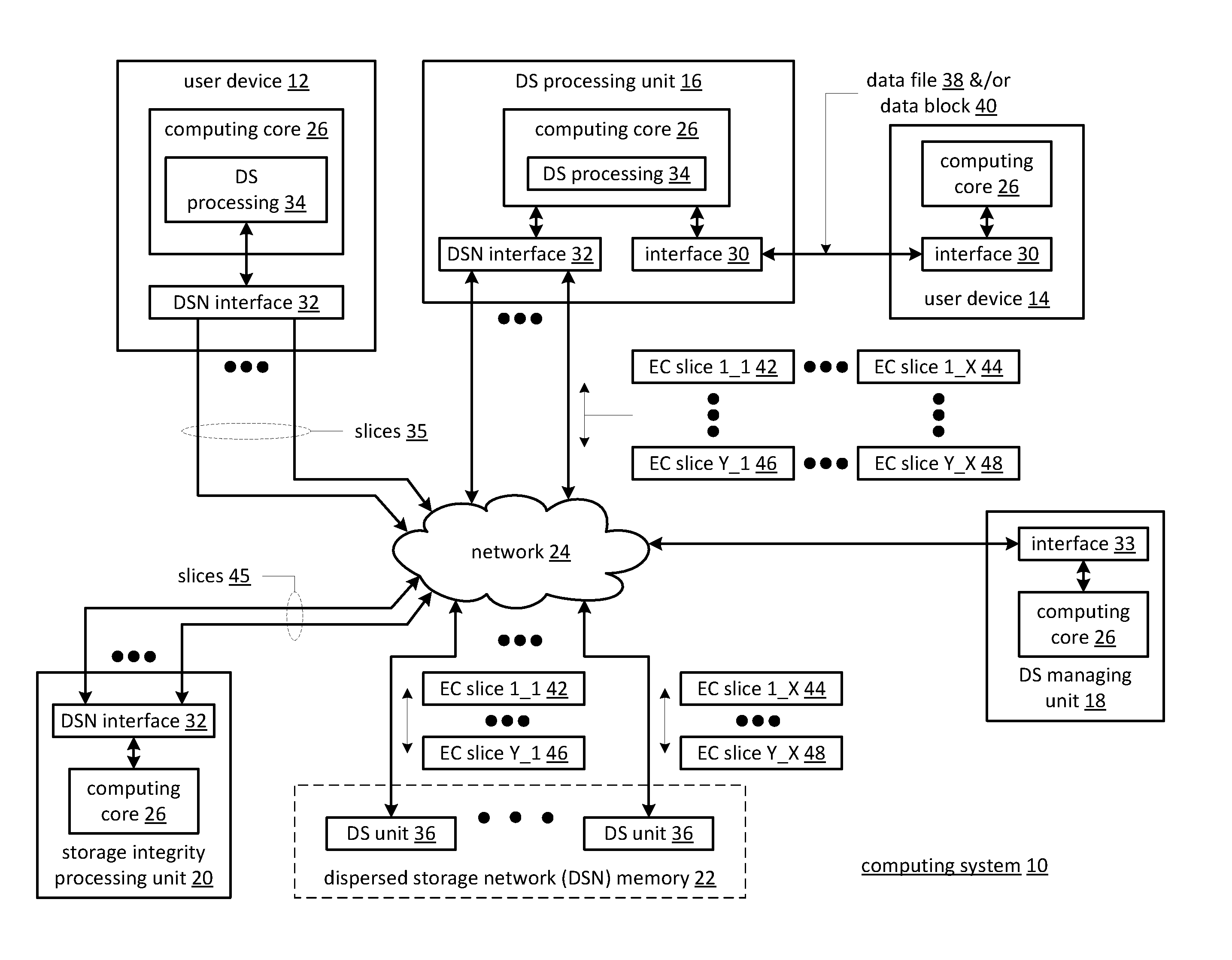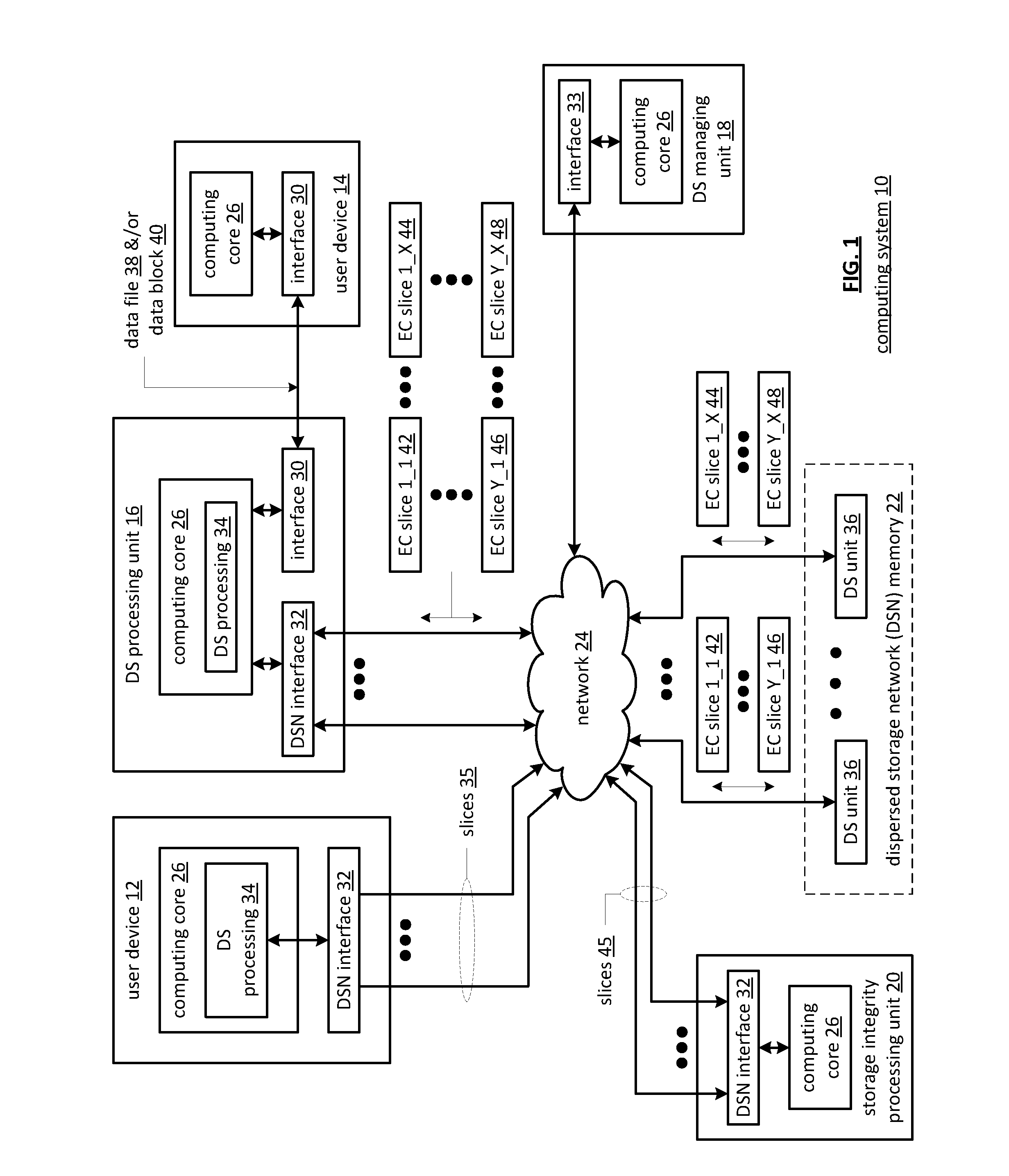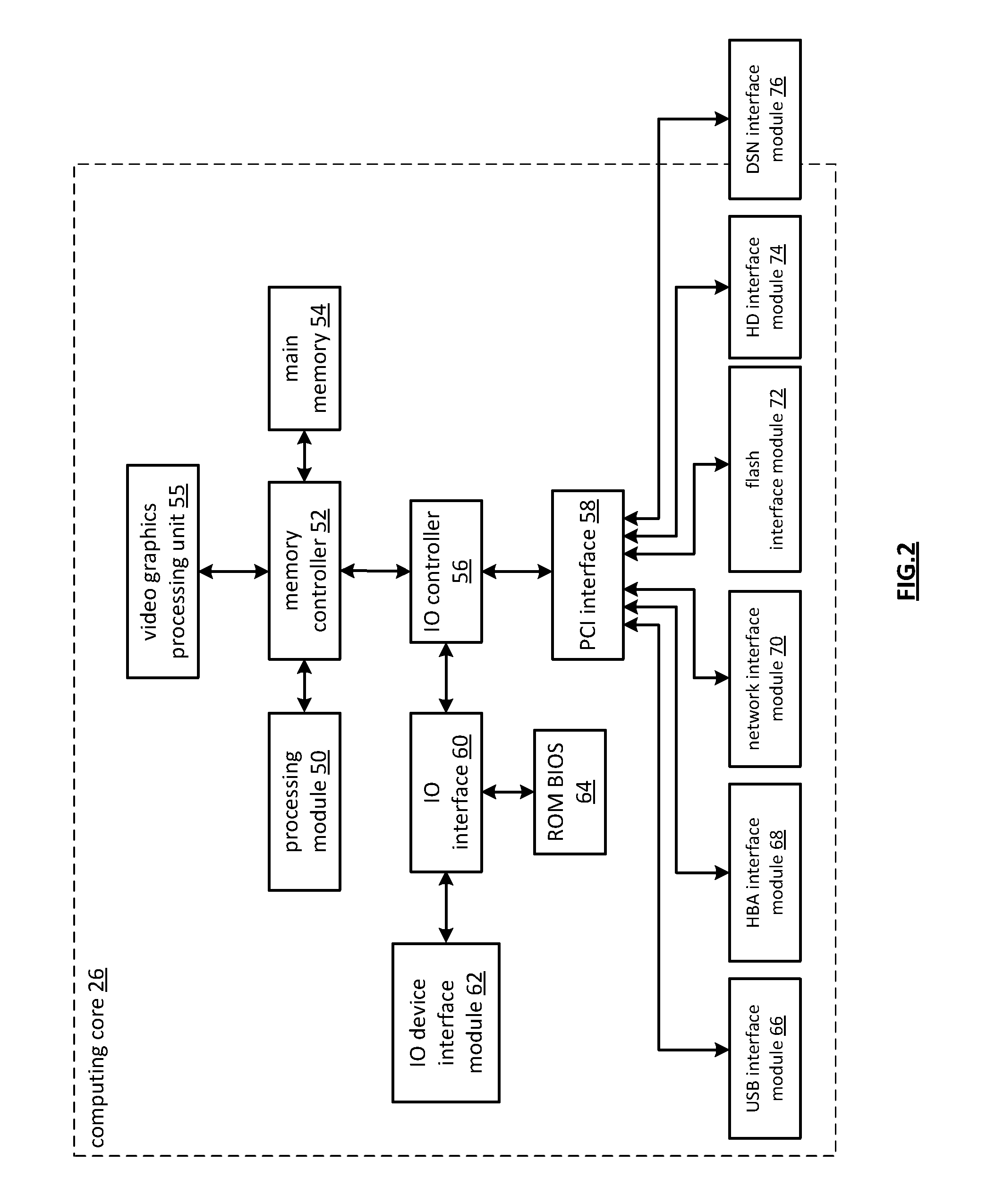Distributed storage network and method for encrypting and decrypting data using hash functions
a technology of hash functions and storage networks, applied in the field of computing, can solve problems such as disc drives suffering from bit level corruption, complete drive failure, and memory devices subject to failure and eventually fail
- Summary
- Abstract
- Description
- Claims
- Application Information
AI Technical Summary
Problems solved by technology
Method used
Image
Examples
Embodiment Construction
[0025]FIG. 1 is a schematic block diagram of a computing system 10 that includes one or more of a first type of user device(s) 12, one or more of a second type of user device(s) 14, at least one distributed storage (DS) processing unit 16, at least one DS managing unit 18, at least one storage integrity processing unit 20, and a distributed storage network (DSN) memory 22 coupled via a network 24. The network 24 may include one or more wireless and / or wire-lined communication systems, including one or more private intranet systems and / or public interne systems; and / or one or more local area networks (LAN) and / or wide area networks (WAN).
[0026]The DSN memory 22 includes a plurality of distributed storage (DS) units 36 for storing data for the system. Each of the DS units 36 includes a processing module and memory and may be located at a geographically different site than the other DS units (e.g., one in Chicago, one in Milwaukee, one in Tokyo, one in Paris, etc.). The processing modu...
PUM
 Login to View More
Login to View More Abstract
Description
Claims
Application Information
 Login to View More
Login to View More - R&D
- Intellectual Property
- Life Sciences
- Materials
- Tech Scout
- Unparalleled Data Quality
- Higher Quality Content
- 60% Fewer Hallucinations
Browse by: Latest US Patents, China's latest patents, Technical Efficacy Thesaurus, Application Domain, Technology Topic, Popular Technical Reports.
© 2025 PatSnap. All rights reserved.Legal|Privacy policy|Modern Slavery Act Transparency Statement|Sitemap|About US| Contact US: help@patsnap.com



